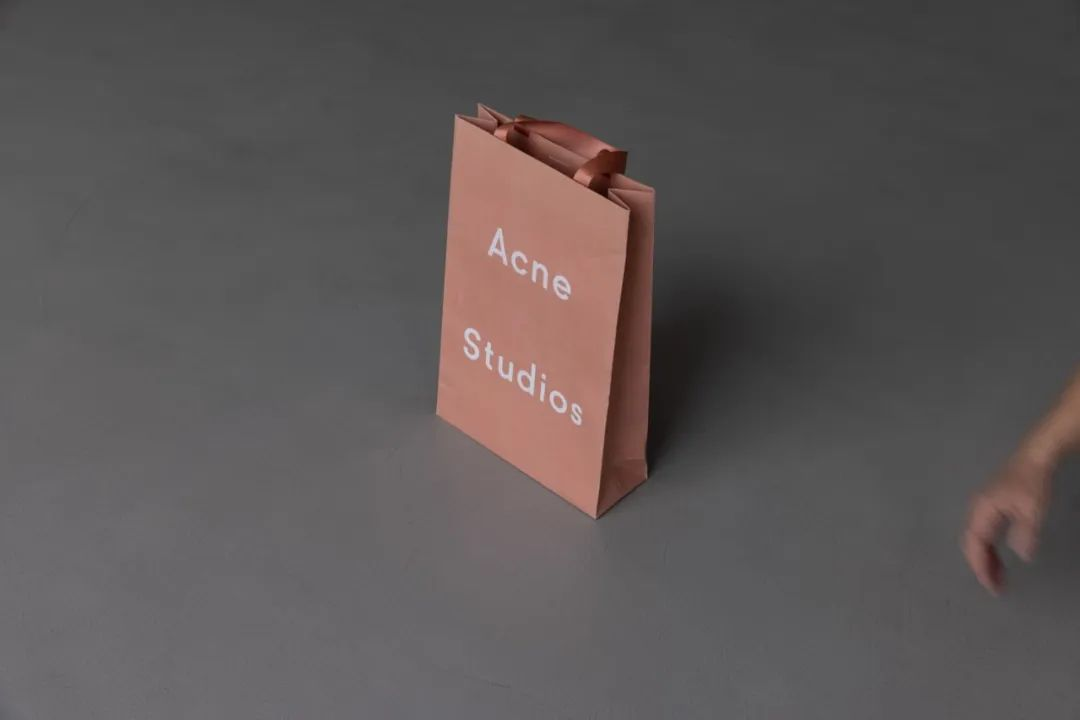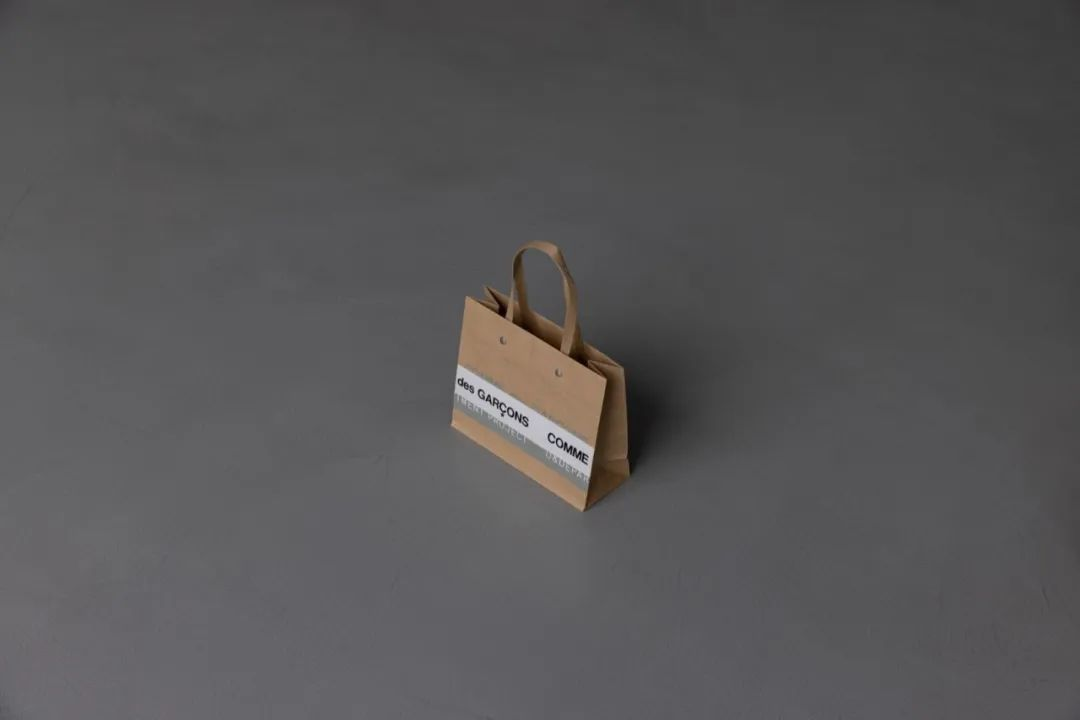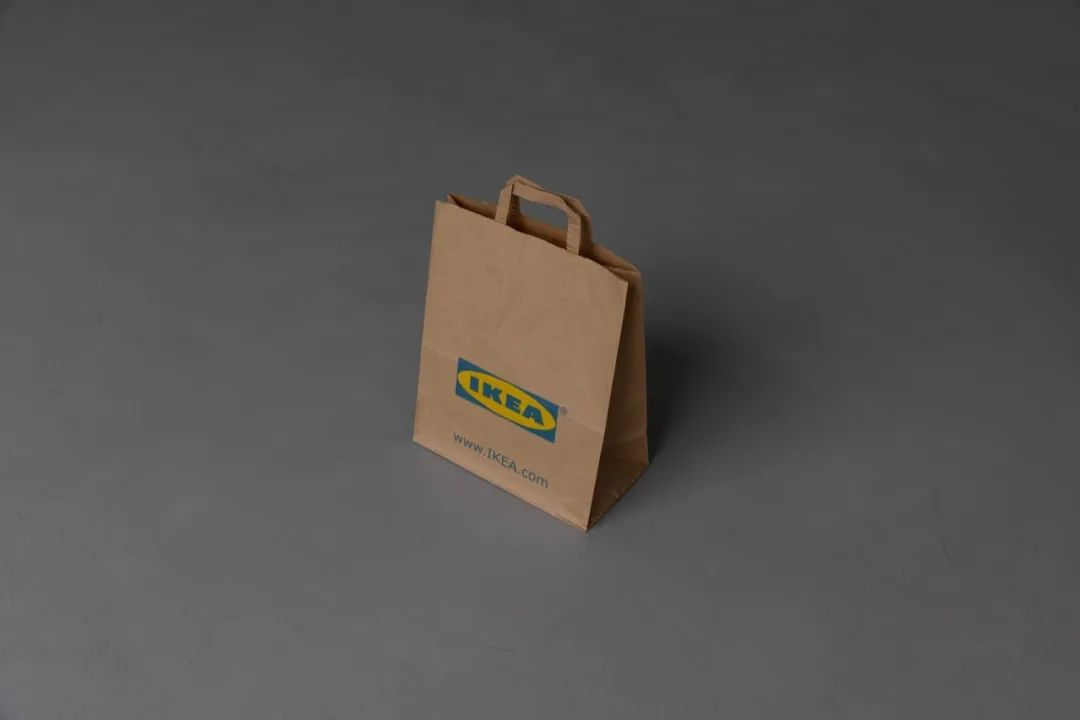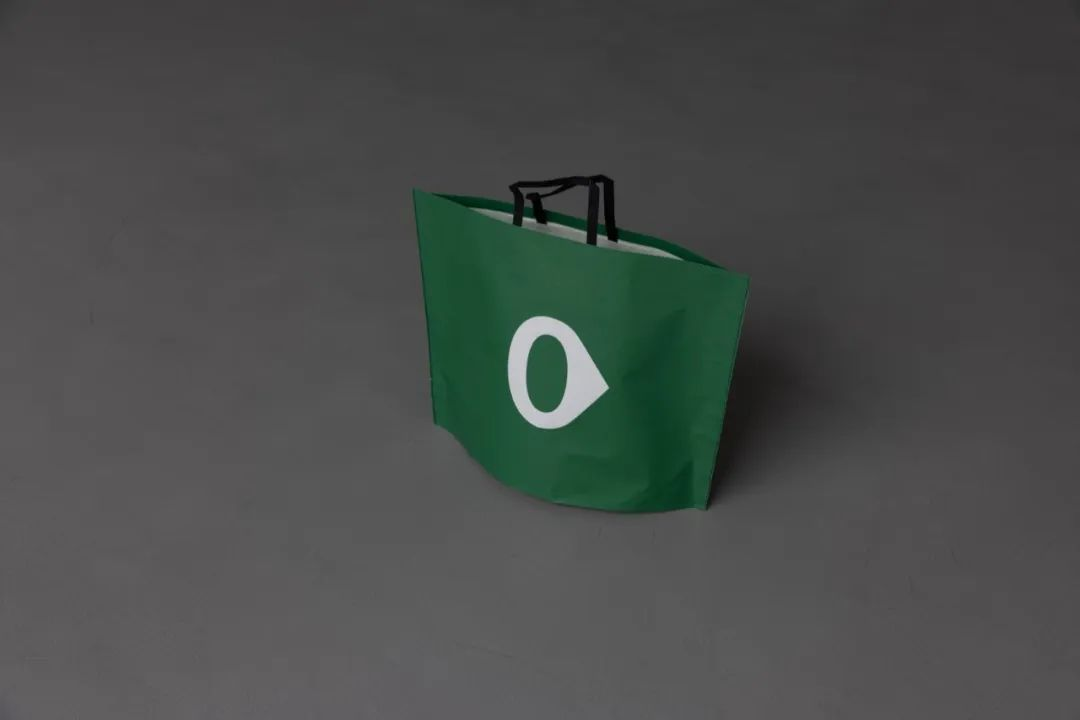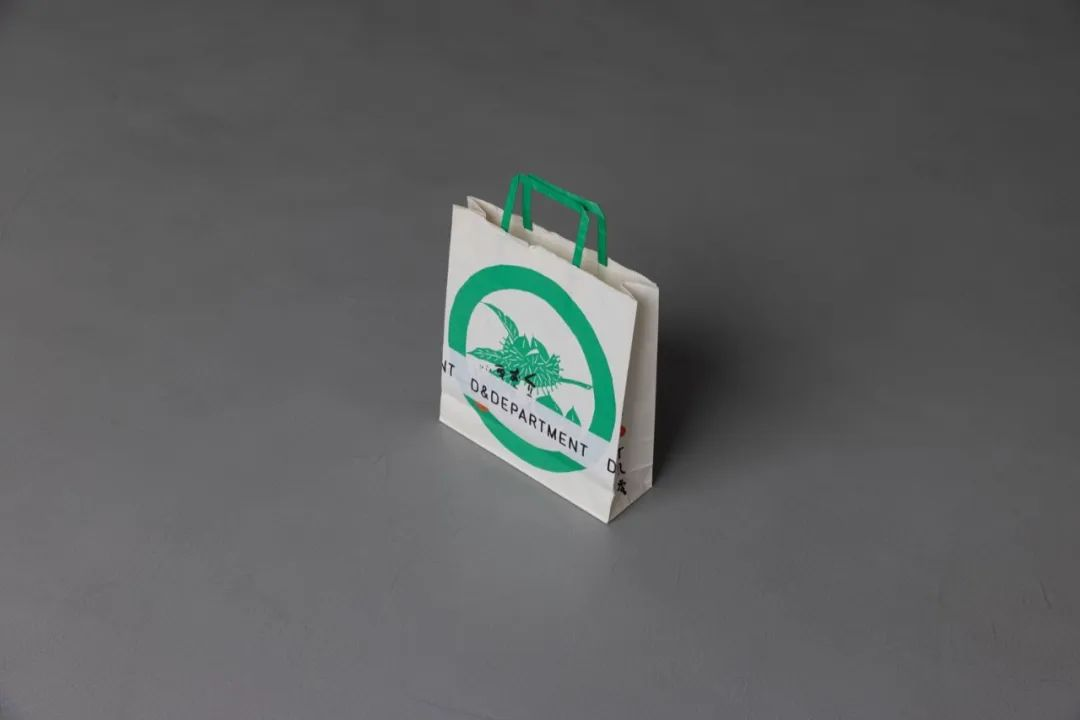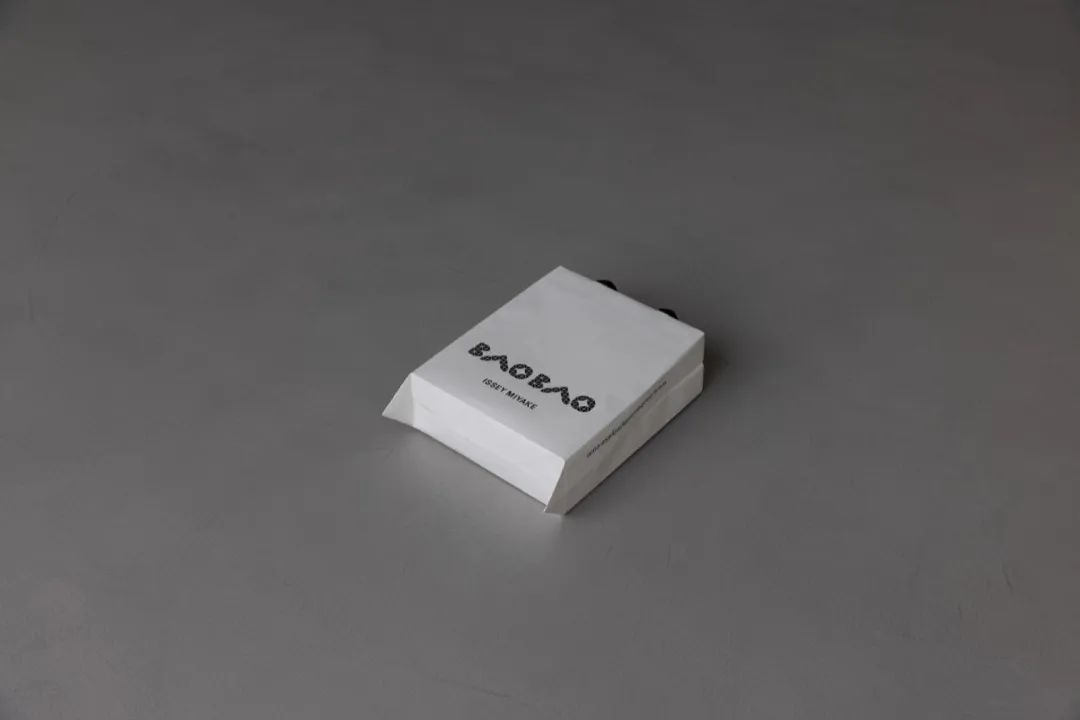
To some extent, custom shopping bags serve as a vital channel for brands and businesses to promote themselves during the consumption process. Often, these bags function as "mobile advertisements" or "brand statements." From this perspective, the role of design as a bridging force is undeniable.

From a designer's perspective, a shopping bag is a fundamental branding material — its form no different from a book cover or a poster, yet its production volume and reach far exceed both. An exhibition space dedicated primarily to paper shopping bags has now opened.

Hundreds of customized shopping bags collected from China, Japan, the United States, and Europe include creations from everyday brands as well as professional designers’ commercial projects. The exhibition also showcases the history of the invention of custom shopping bags and their close relationship with consumerism through archival video materials. More than ten designers and artists have been invited to create works using custom paper shopping bags as their subject.



Custom shopping bags carry both the objects and acts of consumption, while also reflecting the culture and ideals constructed by consumerism. The exhibition invites a renewed look at this simple object: though often seen in daily life as a modest and transient container for wrapping and carrying goods, it is also the most accessible brand derivative, a mobile billboard, and the lightest bridge between brands and consumers.




Reexamining the Bag: Design in Consumer Culture Through a Lightweight Medium
On one hand, we aim to reexamine the humble paper bag. With the growth of online shopping, brand expression through printed materials has gradually diminished. Items such as business cards, envelopes, and letterheads, which were once commonplace, are now rarely seen. Yet, the paper bag remains a crucial mobile medium for brand communication — we may not be able to visit every location to experience a brand firsthand, but we can still “encounter” brands through the ubiquitous presence of paper bags.









A Look at Some of the Custom Bags on Display


Our Favorites Shop uses extremely thin paper for its bags — even the handles are made of a single layer of paper strip, attached to the outside of the bag with stickers. A tag is tied to the handle with cotton thread, highlighting the lightweight structure and translucent texture of the design.

XIXI LIVE's tote bag playfully mimics the common takeaway practice of stapling order receipts onto bags. Instead of a receipt, a card printed with the brand's message is stapled to the pocket, accompanied by a printed floor plan that evokes the spatial presence central to theatrical experience.

The limited-edition tote bag for the 2015 Bi-City Biennale of Urbanism\Architecture (Shenzhen & Hong Kong) was crafted from collected newspapers. Each bag is unique, screen-printed with the event’s visual identity. The dense text of the newspapers creates a sense of intricacy that echoes the theme of the exhibition.

The Gate House Café paper bag features die-cut openings, giving it both a product-like and architectural quality that connects visually to the café's building.

Shoichiro Ogata is a designer with a distinctive traditional style. The bags used in his confectionery shop are made from a traditional and rarely seen oiled paper, which acquires traces of wear with daily use. The logo is embossed, and the bag features a compact shape reminiscent of a traditional basket.

Kyoto's 100% Arabica uses a stamped logo on its kraft paper bags, where the imperfect and random imprint conveys a distinct sense of handmade warmth.

The custom tote bag features a tucked opening that forms the brand's iconic triangular structure.

Each store uses distinct tote bags, with the Tokyo Minami-Aoyama location featuring a unique soft-touch blue cotton paper bag.

The Stone Island tote bag is crafted from unique stone paper, offering waterproof properties, and features a closure integrated with the hook-and-loop fasteners commonly found on the brand's apparel.
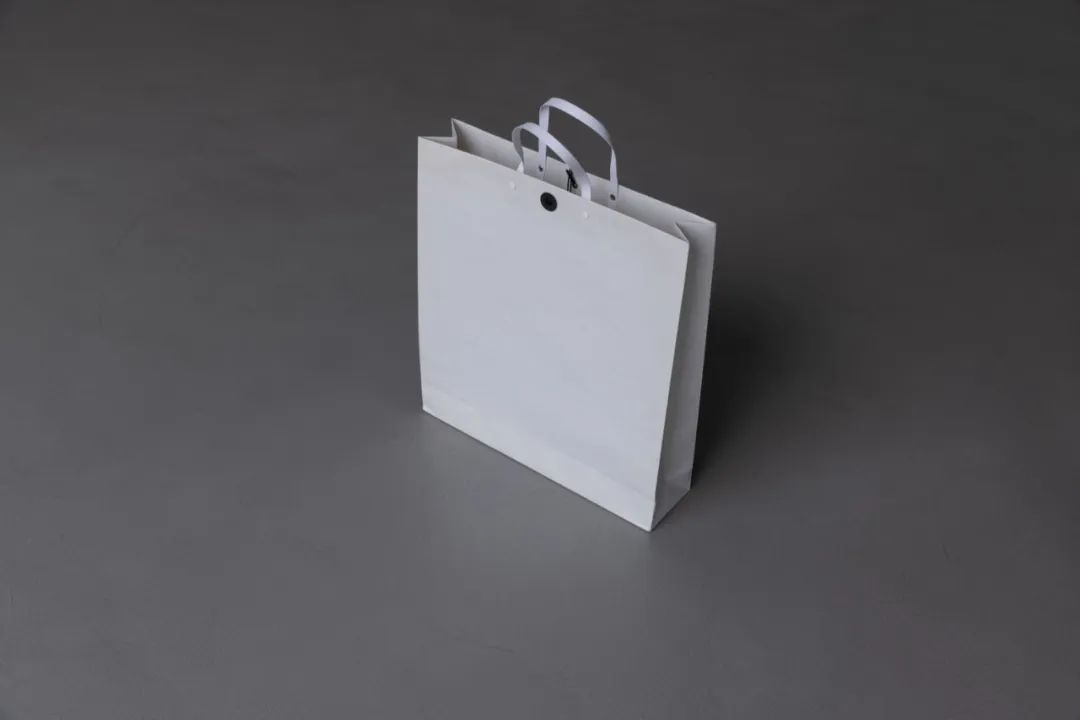
Visvim's pure white tote bag does not have any pattern on it, only the rope part of the traditional file bag is borrowed as an identification element in the mouth part

The bag borrows the side-seam-free design of woven sacks.

The Acne Studios bag features a seamless front design, with all adhesive seams and folding lines strategically placed at the base to maintain a minimalist and clean aesthetic. It is crafted from the brand's custom pink paper, and the logo is accentuated with a three-dimensional embossing technique.

The COMME des GARÇONS × D&DEPARTMENT collaboration tote bag is designed to resemble the taped appearance of D&DEPARTMENT's paper bag recycling initiative.

Apple extends its commitment to environmental sustainability to its tote bags. The straps, which resemble shoelaces, are actually woven from paper-based materials. True to Apple's brand ethos, the logo is presented with subtle restraint, maintaining consistency with the product's clean aesthetic.

MUJI's tote bags show the common characteristics of such popular brand tote bags, simple kraft paper using monochrome printing, which is a very low-cost approach and is also in line with the brand concept

The IKEA tote bag, though appearing to have the texture of ordinary kraft paper, is actually made from specially treated paper that enhances its durability, allowing it to carry heavy items with ease.

An ko Rau utilizes a unique bag shape originating from Spain. It features no side width and resembles an olive when viewed from above. The design is easy to store, can be fully produced by integrated machinery, and is highly cost-effective.

D&DEPARTMENT's paper bag recycling program allows customers to drop off excess paper bags at home in the store, recycle these other brands of paper bags, simply attach their own logo tape to them, and then reuse them

The 23Lab, a plant store in Hangzhou, uses washed paper to make the tote bag waterproof and durable, with a white label attached to the bag to add a visual layer
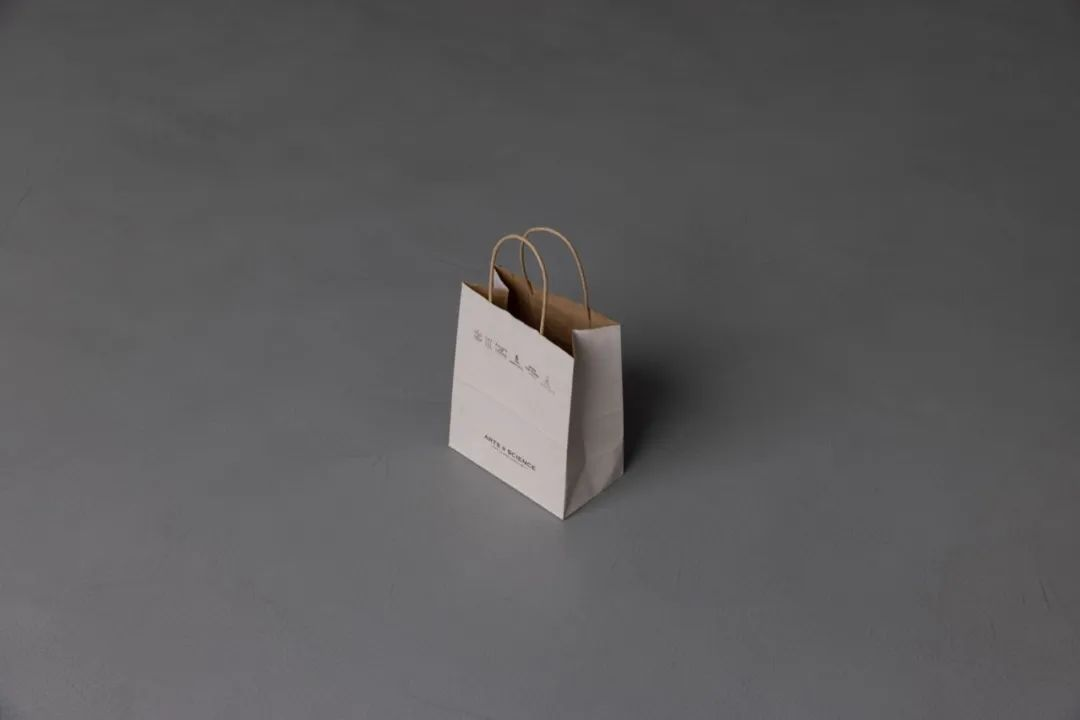
Arts & Science is a boutique grocery store that silk-screen a thin layer of white ink on kraft paper to present a different layer of layers and enrich the texture of the tote bag

The BAOBAO tote bag incorporates a distinctive folding structure inspired by the brand's product design, featuring an unsealed bottom.

Kyoto's % Arabica uses a stamped logo on its kraft paper bags, where the imperfect and random imprint conveys a distinct sense of handmade warmth.

The tote bag features a tucked opening that forms the brand’s iconic triangular structure.

Each store uses a distinct tote bag design, with the Minami-Aoyama location in Tokyo featuring a unique soft-touch blue cotton paper bag.
The Stone Island tote bag is crafted from unique stone paper, offering waterproof properties, and features a closure integrated with the hook-and-loop fasteners commonly found on the brand's apparel.
Visvim's pure white tote bag features no patterns, incorporating only a traditional document-style tie closure at the opening as a distinctive identifying element.
The bag incorporates a side-seamless design inspired by woven sacks.
The front of the Acne Studios bag has no creases, but the adhesive mouth and fold line are placed at the bottom, maintaining the minimalist and clean feeling of the front, the paper is made of the brand's customized pink paper, and the LOGO part uses three-dimensional embossing technology
The COMME des GARÇONS × D&DEPARTMENT collaborative tote bag incorporates design elements inspired by D&DEPARTMENT's paper bag recycling initiative, featuring signature tape detailing that reflects the program's aesthetic.
Apple extends its commitment to environmental sustainability to its tote bags. The straps, designed to resemble shoelaces, are woven from paper-based materials. Reflecting Apple's brand ethos, the logo is presented with understated restraint, maintaining visual harmony with the product's clean aesthetic.
The MUJI tote bag exemplifies the common characteristics of mass-market brand carriers—simple kraft paper with single-color printing. This approach is extremely cost-effective and aligns perfectly with the brand's philosophy.
The IKEA tote bag, though appearing to have the texture of ordinary kraft paper, is actually made from specially treated paper that enhances its durability, allowing it to carry heavy items with
An ko Rau utilizes a unique bag shape originating from Spain. It features no side width and resembles an olive when viewed from above. The design is easy to store, can be fully produced by integrated machinery, and is highly cost-effective.
D&DEPARTMENT's paper bag recycling program encourages customers to bring their unused paper bags to the store. These collected multi-brand bags are then simply rebranded with a tape bearing D&DEPARTMENT’s logo, making them ready for reuse.
The 23Lab, a plant store in Hangzhou, uses washed paper to make the tote bag waterproof and durable, with a white label attached to the bag to add a visual layer
Arts & Science is a boutique variety store. Their tote bag features full-surface screen printing with a thin layer of white ink on kraft paper, creating a distinctive layered effect that enriches the bag’s texture.
The BAOBAO tote bag incorporates a distinctive folding structure inspired by the brand's product design, featuring an unsealed bottom.
Post time: Sep-04-2025






